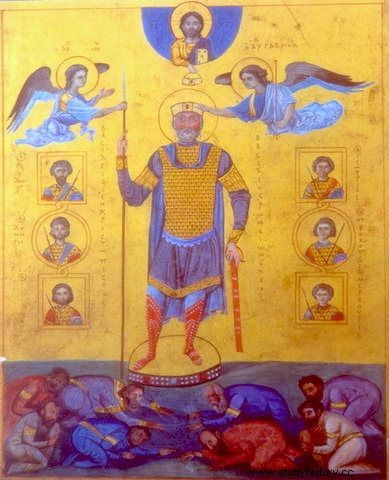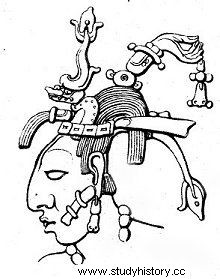In the past centuries, the average life expectancy, even among the privileged social circles, fluctuated around the 40's. Nevertheless, some rulers managed to live to a very old age and ruled their countries for many decades. Some of them have even been named after historical epochs!
Although the average inhabitant of their country lived a relatively short life, they ruled for many years. Here are the ten longest-reigning monarchs. Some of them you've probably never heard of!
10. Victoria, Queen of Great Britain and Empress of India (1837-1901), 63 years, 216 days
The reign of Victoria was not only the expansion of the British Empire, but also a return to family values. On ascending the throne at the age of 18, the young Queen was appalled by the debauched lifestyle of her father's uncles, her brothers, and intended to do otherwise.

Queen Victoria in her youth
Together with her husband, Albert, they were an example of exceptionally compatible spouses raising their children in an atmosphere of love and modesty. Most in the world, Albert and Victoria appreciated a quiet family life away from parties and worldly entertainment.
9. King Ferdinand I, Kingdom of Both Sicily (1759-1825), 65 years, 90 days
It was a state that existed in the years 1816-1860 and consisted of Sicily and the southern part of the Apennine Peninsula. Before that it was the Kingdom of Naples transformed after the Congress of Vienna.
Ferdinand I ruled both countries. The ruler did not write anything special in the history of his country and Europe. Perhaps the most interesting period of his reign was the Napoleonic wars.
8. Basil II, Byzantium, (960-1025), 65 years, 227 days
Bazyli and Konstanty co-ruled the state. The latter was not very interested in state affairs, he was satisfied with the privileges granted by the position he held.

Basil II Bulgarian Slayer
The actual ruler of the state was Basil II, thanks to whom, among others, Serbia and Bulgaria. It was then that Byzantium reached its apogee - it stretched from modern Armenia to Serbia.
7. Emperor Constantine VIII, Byzantium (962-1028), 66 years, 226 days
The emperor was included in the ranking because he formally co-ruled with Bazyli. However, he did not begin to rule personally until after his brother's death. He was said to have enjoyed the punishment of being blinded, and he had readily believed in any rumors of rebellion.
6. Emperor Franz Joseph I, Austria-Hungary, (1848-1916), 67 years, 355 days
During the reign of this monarch, his empire was inclined more and more to decline. In 1866 Austria lost the war with Prussia for domination among the German states. This country also suffered a defeat in the Italian War of Independence and had to relinquish Tuscany, Lombardy and Venice.
Franz Joseph entered into an alliance with the German Empire, which in turn led to the outbreak of World War I, which forced his successor - Emperor Charles - to abdicate.
5. Pakal the Great (K'inich Janaab 'Pakal) ruler of Palenque, city-state of the Maya (615-683), 68 years, 33 days
He sat on the throne at the age of 12. At Palenque, the ruler initiated the erection of objects that are currently considered the greatest treasures of the Mayan culture.

K’inich Janaab ’Pakal
4. Queen Elizabeth II, United Kingdom (1952 - present), 68 years, 146 days
When she ascended the throne in February 1952, 26-year-old Elizabeth was the ruler of the vast British Empire. But in the decades that followed, several dozen countries, such as Ghana in 1957, Nigeria in 1961, Barbados in 1966, Grenada in 1974, declared their independence, formally becoming members of the British Commonwealth of Nations.
Some countries, such as Pakistan, not only became independent, but introduced a republican system. One could say that the reign of Elizabeth II was a period when - thanks to the media - the British monarchy was stripped of its mystery and majesty.
3. Prince Johann II, Liechtenstein (1858-1929), 70 years, 91 days
It was during the reign of this monarch that Liechtenstein, one of the smallest countries in the world, gained independence after Johann II decided in 1866 to leave the German Confederation.

Johann II
In 1868, the prince decided to liquidate the army (the country does not have its own army to this day). In 1921 he introduced the Constitution making Liechtenstein a constitutional monarchy.
2. King Rama IX, Thailand (1927-2016), 70 years, 126 days
A characteristic feature of the king was the camera hung around his neck. The point was that the monarch loved to document the life of his country and the everyday life of its inhabitants.
He was often seen sitting on the ground and talking to citizens. Rama IX will be remembered, among others thanks to his involvement in solving farmers' problems. The capital of the state of Bangkok owes its modern face to him.
1. King Louis XIV, France (1638-1715), 72 years and 115 days.
In his own eyes, Louis XIV was God's representative on earth, endowed with the divine right to exercise absolute power. To emphasize his unique position, the king chose the sun as a symbol and nurtured the image of the omniscient and infallible "Sun King" around which all of France orbited.

Louis XIV called himself the Sun King and to this day remains the longest reigning ruler in history
Louis XIV is remembered for the bold and infamous statement "L'État, c'est moi" ("The State is I").
The monarch pursued an exceptionally aggressive foreign policy and did not hesitate to engage in armed conflicts in Europe in order to gain new lands. He contributed to the development of culture and art, incl. transformed a modest hunting residence in Versailles into a lavish palace.
